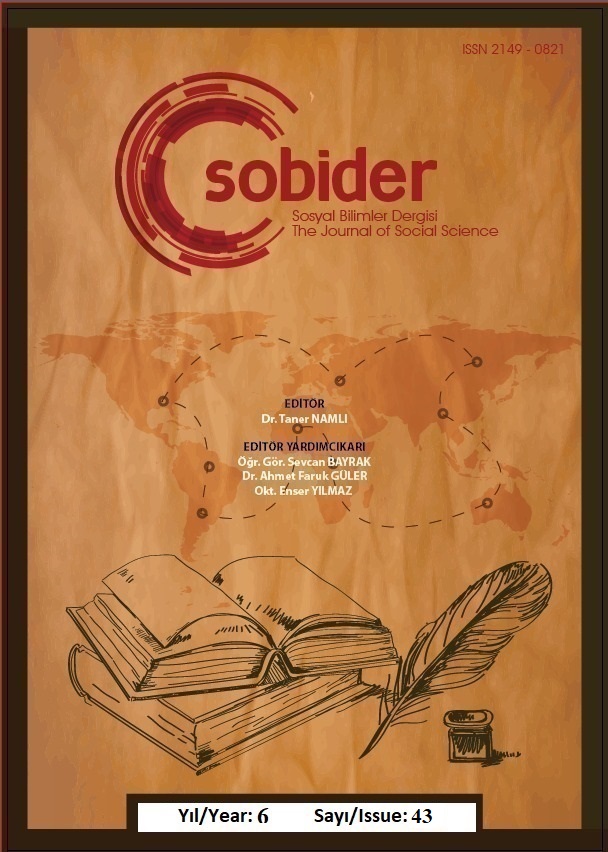GÜNEY AMERİKA GELENEKSEL DANSLARINDAN MİLONGA, TANGO VE CHORO’NUN 20. YÜZYIL ÇAĞDAŞ GİTAR REPERTUVARINA KATKILARI
Author :
Abstract
Güney Amerika geleneksel müziği, kıtanın geçirdiği tarihsel süreç ve barındırdığı toplumların kültürel çeşitliliği nedeniyle son derece zengindir. Kıtanın kültürel dokusu; yerli halklar, Afrika’nın çeşitli bölgelerinden köle olarak getirilen topluluklar ve Avrupa’dan gelen sömürgecilerin izlerini taşır. Bu çalışmada çağdaş klasik gitar repertuvarının önemli bir parçasını oluşturan milonga, tango ve choro dansları; kökenleri, ritmik yapıları, karakteristik özellikleri bağlamında ele alınacaktır. Bu dans formları; A. Fleury, A. Piazzolla, J. Pernambuco, H.Villa Lobos gibi 20. yüzyılda öne çıkan Güney Amerikalı bestecilerin gitar için bestelemiş oldukları eserlerden örnekler verilerek incelenecektir. Dans formları ve eserler, klasik gitar alanındaki çalım popülerliği gözetilerek seçilmiştir. Aynı şekilde geleneksel Güney Amerika müziklerinin besteciler tarafından özgün eserlere dönüştürülmesi ve gitar repertuvarına katkıları ortaya konacaktır. Çalışmamızın, bu eserleri seslendiren gitaristlere ve bu alandaki eğitimcilere katkıda bulunması hedeflenmektedir.
Keywords
Abstract
The traditional music of South America is very rich due to both the historical process of the continent and the cultural diversity of the communities it hosts. The cultural structure of the continent bears traces of indigenous peoples, communities brought from various parts of Africa as slaves and colonists from Europe. In this work Milonga, Tango and Choro dances, which constitute an important part of contemporary classical guitar repertoire will be analysed in terms of their origins, rhythmic structures and characteristic features. These dance forms will be examined with examples from the compositions for the guitar by such prominent South American composers of the 20th century as A. Fleury, A. Piazzolla, J. Pernambuco and H.Villa Lobos. The dance forms and compositions were selected by considering their popularity at classical guitar performances. Furthermore, the transformation of traditional South American music into original pieces by composers and their contribution to the guitar repertoire will be revealed. The aim of our work is to contribute to the guitarists who perform these compositions and to the trainers in this area.
Keywords
- Cangal. N. (2004), Müzik Formları, Ankara: Arkadaş
- Cardoso,J. (2006), Ritmos y formas musicales de Argentina,Paraguay y Uruguay Posadas: Editorial Universitaria de Misiones.
- Coelho.T., Koidin,J. (2005).The Brazilian Choro: Historical Perspectives and Performance Practices, The Flutist Querterly, 36-45.
- Dorsey, C.(2005). The rise, fall and rebirth of the guitar in the Argentinean tango,
- Doktora tezi, Arizona State University. Fagilde, M.L.(1995). A Study of Six Argentinean Dances, Doktora Tezi, University of Miami. Galeano,E.(2016). Latin Amerika’nın Kesik Damarları, Çev. Roza Hakmen, Sel Yayıncılık.
- Garcia,T.G.C.(1997). The Brazilien Choro: Music, Politics and Performance, Doktora tezi, Duke University.
- Kaya, A. (2018). Tango Müziğinde Gitarın Yeri, Yayımlanmamış bildiri metni, 3.Uluslararası Akdeniz’de Güzel Sanatlar Sempozyumu ve Kültür Sanat Çalıştayı, Antalya.
- Megenney, W.W. (2003), The River Plate “Tango”: Etymology and Origins, Afro-Hispanic Review, Vol. 22, s.42
- Miller, R.E.(2006). The Guitar in the Brazilien Choro, Doktora tezi, Washington: The Catholic University of America.
- Robinson J.B.(2001) https://www.oxfordmusiconline.com
- Schroeder, L.M.(2015). The flute and guitar duo: The development of an equal partnership, Doktora tezi, The University of Iowa.
- Wahl, R.J.(2012). Agustin Barrios and Musical Identity: Tangos in Early Twentieth Century Guitar Repertory, Yüksek Lisans Tezi, California State University





